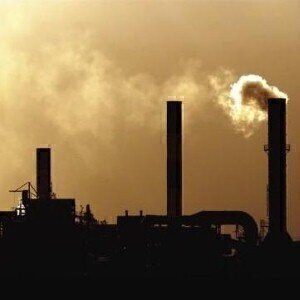Air Clean Up
Latest Climate Pledges Demonstrate Need for Cleaner Coal Technology
Jul 07 2015
Emissions reduction pledges by a range of countries in the lead-up to the COP21 climate negotiations in Paris demonstrate the need for more investment in low emission coal technology, World Coal Association (WCA) Chief Executive Benjamin Sporton said today. Many more countries will be making their pledges in the coming months.
“Clearly many countries are making ambitious commitments in the lead up to Paris, but without significant investment in low emission coal technologies those commitments are going to be very difficult to achieve,” Mr Sporton said.
“Coal is forecast to play a significant role in the world’s energy mix for decades to come and so investment in low emission coal technologies, such as high efficiency low emissions power generation and carbon capture and storage, is critical to achieving global climate objectives.”
According to the International Energy Agency’s (IEA) New Policies Scenario, coal’s share of the world energy mix will only drop from 29% today to 24% in 2040 as world energy demand increases by 40%. The same IEA data also shows coal-fired power generation is forecast to grow 33% over the same period – even with ambitious targets for deployment of renewable energy.
Demand for coal is primarily driven by Asia where countries are utilising it to provide affordable, reliable electricity to power their economies. IEA data shows the demand for coal in Southeast Asia is expected to grow 4.8% year-on-year through to 2035. Electricity from coal in India is expected to more than double by 2040 and will continue to grow in China.
“Some commentators point to the recent easing in coal demand to argue that China is moving away from coal when in fact most respected analysis from the IEA and others shows that coal will still provide the majority of China’s electricity for decades to come. What many commentators also choose to ignore is that to bring electricity to the 300 million people who don’t have it in India will require a huge growth in energy from all sources, including coal,” Mr Sporton said.
“Peaking and then reducing emissions requires action now to ensure the most advanced coal technologies are built. Modern high efficiency coal plants produce 35% less CO2 than older technology and are a key first step on the pathway to carbon capture and storage.”
Mr Sporton said countries Intended Nationally Determined Contributions should include calls for support for low emission coal technologies. “The Paris outcome should support a mechanism to make sure those countries who are going to use coal are supported to use it in the cleanest way possible, this includes support through the Green Climate Fund and equal treatment for carbon capture and storage alongside other low emission technologies.”
The World Coal Association has recently launched a concept for an international Platform to Accelerate Coal Efficiency (PACE). The PACE platform would support developing and emerging economies move away from low efficiency coal-fired power generation toward modern high efficiency low emission plants.
“Despite what some people might wish, coal isn’t going anywhere anytime soon so if we are to achieve global climate ambitions and have a meaningful deal in Paris it must support more investment in low emission coal,” Mr Sporton said.
Events
May 05 2024 Seville, Spain
May 13 2024 Munich, Germany
May 23 2024 Beijing, China
May 23 2024 Beijing, China
Jun 10 2024 Algiers, Algeria














